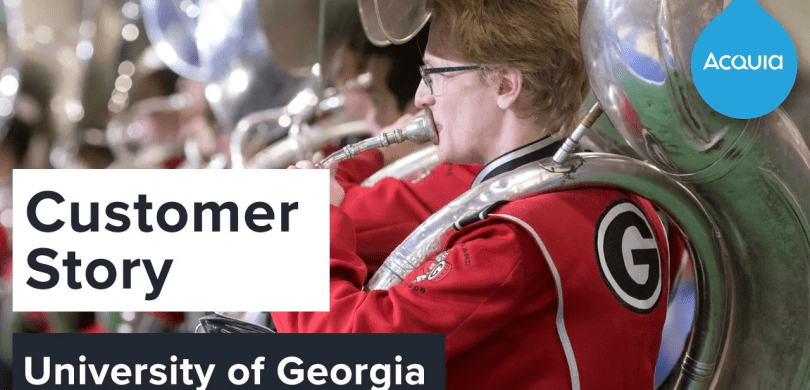
University of Georgia
Acquia DAM (Widen), including the Assets, Insights, and Portals applications.

total assets
metadata types
downloads in the last 12 months
The Client
The University of Georgia (UGA) is one of the top public research universities in the U.S. Their main campus is in Athens, approximately one hour northeast of Atlanta.

The Situation
The Marketing and Communications division includes multiple full-time photographers that create imagery to support communication efforts across campus. The team uses their digital asset management (DAM) system, Acquia DAM, to store this expanding library of content.
The Challenge
Although Acquia DAM provided a central location to store creative content, the Marketing and Communications team struggled to find time for metadata creation. As a result, many images lacked the descriptive information that makes them easy to find and distribute. “A lot of good images were kind of falling through the cracks,” said Rick O’Quinn, the Operations Manager for UGA’s Marketing and Communications division.
The Solution
Through some creative collaboration — and powerful DAM functionality — Rick’s team found a sustainable metadata workflow that allows them to get the right content to the right users quickly.
Flexible metadata fields
The team developed a metadata workflow that distributes responsibilities across three groups of people, and used a designated metadata field to track their workflow. As metadata creation moves from the photographers, to student workers, and finally to Rick, this field is updated to signal that the asset is ready for the next phase. Rick explained, “We're basically using fields that we put in the system just to manage workflow, to be able to tag stuff so we can easily search, find it, and tell somebody, ‘Hey, you need to do this.’”
Automation
To further streamline their metadata tagging process, Rick’s team maximizes their use of time-saving tools in Acquia DAM. For example, batch upload and editing functionality allows them to populate fields across numerous assets at once. And with metadata mapping, when files are imported from software like Adobe Photoshop, Bridge, or Lightroom, the embedded file data is automatically pulled into metadata fields in Acquia DAM. All of this functionality allows the team to significantly reduce the number of fields that need to be populated manually.
Self-serve access
The photography stored in UGA’s DAM system is used by a wide range of users with diverse content needs. So Rick’s team uses Portals in Acquia DAM to help everyone access just the assets they need. Their brand portal is organized into content categories, such as buildings and places, research, and student life, that can be filtered using metadata fields. This portal is available to both university employees and the general public, so anyone is able to find what they need, agree to the end user license agreement, and download the files.
The Results
More time for creative work
UGA’s collaborative, streamlined approach to populating metadata fields allows the photographers to spend less time on data entry and more time on creative work. This results in more visual imagery, and more value for the university.
More assets available for use
Before their current approach to metadata creation, many valuable images simply weren’t being loaded into the DAM system. Now UGA has the capacity to make these images available to users quickly. “We are constantly able to push new images every couple of weeks,” Rick said.
Better return on investment
By using metadata fields to track metadata creation across team members, UGA has increased their creative output and enhanced their service to their users, which cascades into improved workflows for everyone that relies on their photography.